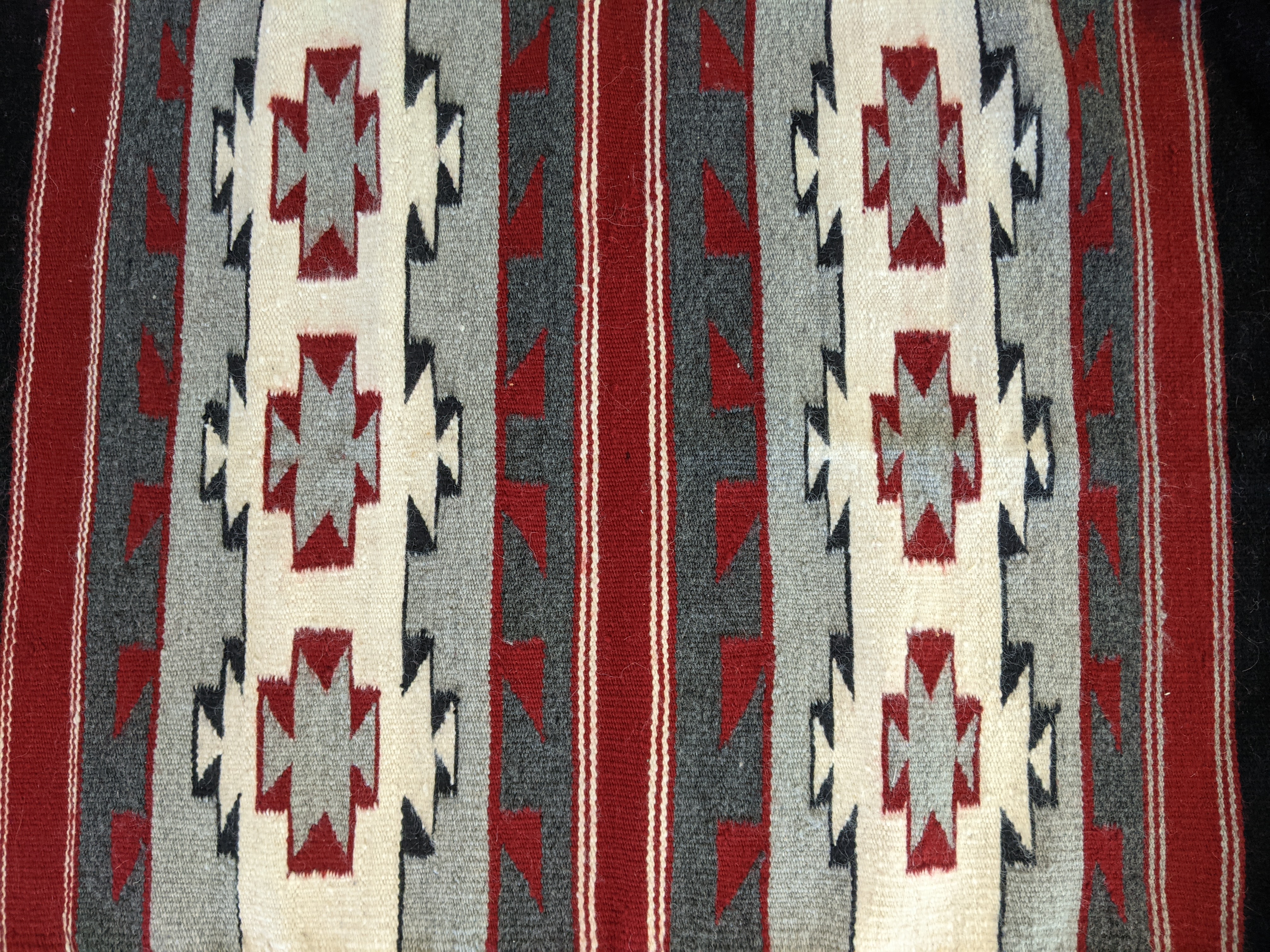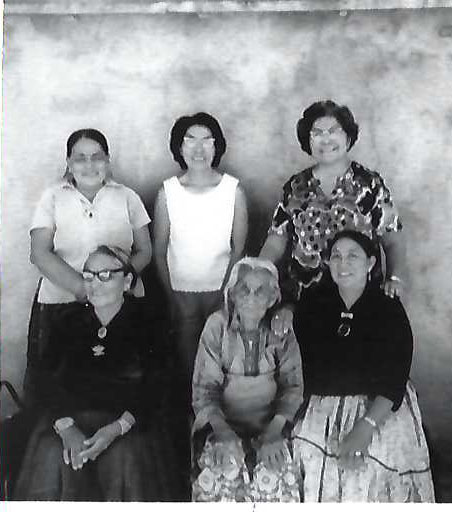Inspired by and in collaboration with Dr. Georgina Badoni’s MatriArt project to elevate the voices of contemporary Native women artists and mothers, the University Museum is highlighting stories of Native motherhood, education, tradition, and resistance from its collections. The various stories associated with the collections pictured here represent moments in the lives of Native women—among them mothers and daughters, grandmothers and aunts, sisters and wives. These formidable women carried on and evolved both cultural traditions and their own families through their work. We are honored to share their stories and their art. Today, we highlight the work of Isabel Mitchell Deschine and her mother Tall Woman.

2009.10.15, University Museum.
Isabel (Mitchell) Deschine wove this soft rug out of red, black, gray, and white wool in banded, geometric patterns during the fall of 2006. Isabel—a Diné woman of Chinle, Arizona—learned to weave from her mother, Tall Woman (Rose Mitchell) of the Kiyaa’áannii (Towering House) clan. Tall Woman learned to weave by watching her own mother (Tall, Beautiful Woman), older sisters, and father (Man Who Shouts) while she carded and spun wool for them at night. Her father would make the looms for the family, and also encouraged Tall Woman’s children to experiment with weaving patterns.

Tall Woman (center) with her daughters (including Isabel, front right) outside Augusta's house, August 2, 1971.
Front (left to right): Mary Mitchell Davis, Tall Woman, Isabel Mitchell Deschine
Back (left to right): Ruth Mitchell Shirley Yazzie, Augusta Mitchell Sandoval, Agnes Mitchell Sanchez
Photo by Charlotte J. Frisbie, courtesy of Charlotte J. Frisbie.
As a young child, Isabel spent a great deal of time watching her mother weaving, and in doing so learned many of the designs her mother had developed over the years. Tall Woman and her husband, Frank Mitchell, refused to send Isabel to school after two of their older daughters died in the in the custody of the government-run boarding schools for Native American children. As a result, Isabel spent more time with her mother and eventually carried on Tall Woman’s weaving traditions in Chinle. After Tall Woman passed away in 1977, one of her children spoke of the importance of weaving for their family: “Without all the rugs she made for years and years, we wouldn’t have survived; we wouldn’t even be here. It’s mainly on her account all us kids didn’t starve to death” (Mitchell 2001, 322).
For more on Isabelle Deschine, Tall Woman, and their family, see: Mitchell, Rose (author) and Charlotte J. Frisbie (ed.). 2001. Tall Woman: The Life Story of Rose Mitchell, a Navajo Woman, c. 1874-1977. Albuquerque: University of New Mexico Press. The anthropologist Charlotte J. Frisbie purchased the rug (2009.10.15) from Isabel in 2006 during her long-term work with Tall Woman’s family. She donated it to the University Museum along with her husband Theodore R. Frisbie in 2008.